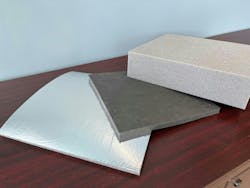Choosing the Right Material for Soundproofing and Vibration Control in Hydraulic Systems
Vibration and noise control are crucial in many industries, but what do they entail exactly? In hydraulic systems, where precision and reliability are paramount, managing vibrations and reducing noise levels are crucial tasks.
Vibration control strategies in hydraulic systems focus on minimizing mechanical oscillations that can disrupt equipment performance and compromise system stability. Methods such as damping, isolation, and active control mechanisms are employed to effectively mitigate vibrations.
Noise control in hydraulic systems aims to diminish overall noise levels generated during operations. This is achieved through specialized soundproofing techniques, installation of active noise cancellation systems, and other tailored approaches.
Understanding the specific applications of vibration and noise control within hydraulic systems is essential for optimizing conditions and ensuring long-term efficiency.
The Beneficial Impacts of Hydraulic System Vibration and Noise Control
Effective soundproofing and vibration control measures not only minimize noise but also optimize hydraulic system efficiency. By dampening vibrations that can affect performance, these measures enhance operational reliability and extend the lifespan of critical components.
Additionally, a quieter working environment improves operator comfort, reduces the risk of noise-induced fatigue, and enhances overall workplace safety.
Proper Soundproofing and Vibration Control can Prove Challenging
Choosing the appropriate soundproofing and vibration control solution presents significant challenges, primarily influenced by the complexity of the system and environmental factors.
- System Complexity: The intricate nature of the system itself poses the primary challenge in selecting suitable solutions. Factors such as spatial constraints within the system and the surrounding environment can greatly impact the choice of materials and methods used for soundproofing and vibration control.
- Material Compatibility: Ensuring compatibility of materials is crucial. It requires evaluating whether the selected materials can endure exposure to chemicals, moisture, varying temperatures, and other environmental conditions without compromising their effectiveness or durability.
- Cost Considerations: Balancing cost with performance benefits is essential in determining the most appropriate solution. It's vital to achieve improvements in system performance while managing costs effectively to ensure the solution provides long-term value.
Common Misconceptions When Designing Noise and Vibration Control
Misconceptions surrounding sound and vibration control solutions in hydraulic systems often include the belief in universal solutions that fit all applications, despite the diverse operational requirements of these systems.
Tailored solutions are necessary to address specific challenges effectively. Additionally, while these solutions aim to minimize disturbances, complete elimination of noise and vibrations is typically impractical.
The primary objective remains to be significant noise reduction to optimize operational conditions and equipment performance.
Key Considerations for Material Selection to Minimize Vibration and Noise
When selecting materials for soundproofing and vibration control in hydraulic systems, several critical factors must be considered:
- Acoustic Properties: Assess the material’s ability to absorb or reflect sound waves effectively within hydraulic assemblies.
- Vibration Damping: Evaluate materials that can effectively reduce vibrations and prevent their transmission through hydraulic components.
- Compatibility: Ensure materials are compatible with hydraulic fluids, resistant to environmental factors such as chemicals and moisture, and capable of withstanding varying temperatures.
- Durability: Consider the longevity and durability of materials under continuous hydraulic operation.
- Ease of Installation: Choose materials that facilitate straightforward integration within hydraulic assemblies, minimizing downtime during installation.
- Cost-Effectiveness: Balance initial investment with long-term benefits in operational efficiency and maintenance savings.
- Regulatory Compliance: Verify adherence to safety and environmental standards applicable to hydraulic systems.
READ MORE: Clamp down on noise and vibration from hydraulic tubing
Effective management of vibrations and noise in hydraulic sytems is not just about meeting regulatory standards; it’s about optimizing performance, enhancing reliability, and creating safer, more comfortable working environments.
By navigating the complexities, addressing misconceptions, and selecting material with meticulous care, industries can ensure their hydraulic systems operate at peak efficiency while mitigating potential disruptions.
This article was written and contributed by Dave Giguere, Product Specialist at Nott Co.
About the Author
Dave Giguere
Product Specialist
Dave Giguere is a Product Specialist at Nott Company, a provider of engineering services for mobile and industrial fluid power applications.

Leaders relevant to this article:




